Live Sound Equipment List - Music Gear for Live Performance
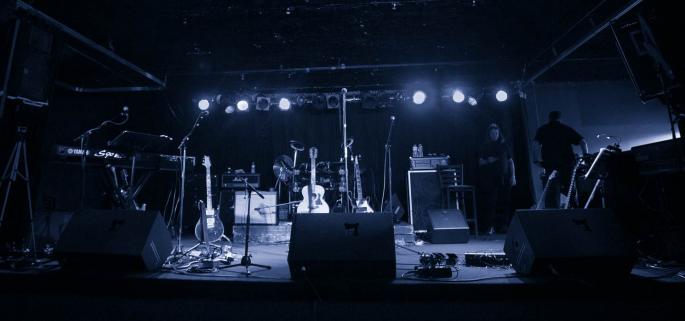
Here is an extensive guide to the range of live sound equipment used for performing and is intended for use as a reference equipment list for musicians, technicians and venue owners.
Contents:
PA Systems
Public Address Systems provide connection, sound amplification and distribution to get your music heard by the public. They encompass everything that your instrument or vocal signal has to pass through to get to your audience. This includes microphones, cables, mixers, amplifiers, speakers and every item in between. Studio / Live sound system is another term that means the same meaning. To better organize the information provided here, we will focus on mixers, amplifiers, cables and wireless systems, and we have a dedicated section for PA Speakers and Microphones.
-
Mixing Desk
The mixing desk, also called a mixer or mixing console, is the central hub of your music, where all the different sound sources are received, processed and mixed, the end result being good live sound. I cannot stress enough how important this gear is, and how the proper use of it can make a big difference to your performance. This is where volume levels are set, along with tone and EQ adjustments, dynamic changes, routing and more. Modern mixers also come with built-in digital signal processing, for effects. They also allow for instant live recording when connected to a computer. Digital mixers and analog mixing consoles are quite expensive, so you'll have to really do your homework when your looking to buy your own mixing desk. This piece of gear is especially important in Church Sound Systems.
-
Power Amplifiers
As the name implies, these are what amplify your sound before going to the speakers. They can either be standalone, built-into the mixing console or built-into the speakers. Most modern setups, including mobile ones, come with active speakers (amps built in) because of their convenience, while bigger venues prefer more powerful standalone amplifiers and passive speakers. When it comes to amps, many still prefer the sound quality of an analog setup.
-
Equalizer and other Rack Effects
Standalone equalizers let you fine tune the overall sound of your PA system and your monitors, depending on where you implement them on the signal chain. This is a critical piece of audio equipment for tweaking your sound to match various music venues, and for making last minute adjustments to correct frequency and feedback problems. Other rack effects like reverb, compression and delay are used to improve your overall live sound. There are also other effect racks that are specifically tuned for vocals, guitars, drums and other instruments. As the number of effects you use increases, so does the possible combinations. EQ and compression are used together quite often to achieve certain tones and timbres.
-
Effects Pedals
Some performers also use effects pedals which they can control from the stage. Typically these are special vocal processors or loopers. To find out more read our Vocal Effects Pedal / Processor Guide. Note that effects are not limited to pedals, some effects like the Spring Reverb are often built-into amplifiers.
-
-
Speaker / Instrument / Mic Cables
Cables continue to provide a more reliable and straightforward way of getting your sound through your Public Address System. Just make sure that you are using the correct speaker cable or instrument cable for the job. If each cable should be properly handled, regularly checked and maintained, you can be sure that you're live gigs will be glitch free.
-
Snake Cables
A snake cable is a system of cables that are organized to provide convenient stage connection between multiple sound sources and your analog or digital mixer. Instead of having to lay down multiple wires for multiple mics and instruments, all you have to do is get a snake rolled out and use the solid connection that it provides. This allows for a more organized and clutter-free setup, and it'll make the job of live sound engineers easier.
-
Wireless Systems
Wireless Microphones, in ear monitors, and other wireless systems have come a long way from their reputation of being unreliable and problematic to set up. Technology has allowed wireless systems to automatically set themselves up, and change settings to get the most reliable and best quality transmission in real time. These systems are being utilized by pros and non-pros alike, allowing for true un-tethered performances. The two most common types used live are Wireless Microphones and Wireless In Ear Monitors.
-
Media Players
In the past, most PA Systems had a tape deck or a CD player, these days, a single laptop, tablet or smartphone can do the job, and do so much more effectively. Just make sure that you have your music loaded up on your device, ready for playing through the PA for sound check, breaks, and even for emergencies.
-
Portable PA Systems
Portable PA Systems are affordable solutions for musicians who perform mainly at smaller venues like coffee shops, small bars and the like. These usually come with a mini mixing board, some built-in effects, a power amplifier and a built-in speaker. In line with this, many of today's powered speakers can be considered as portable PA systems, which make them modular and flexible. Many modern Keyboard Amps and Acoustic Amps are also designed to be used as small PA systems. If you perform in places where mains power isn't available then you can use a Battery Powered PA System.
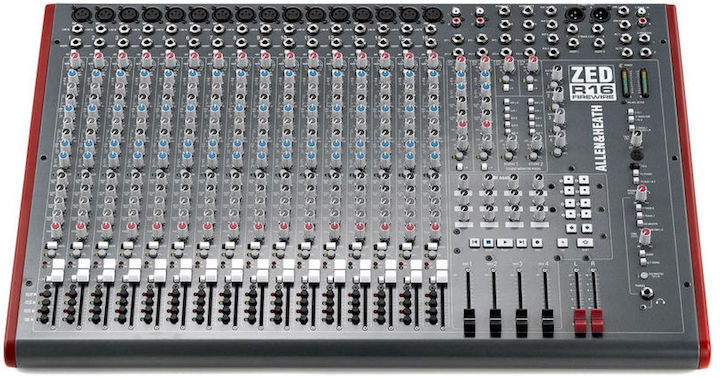
PA Speakers
These speakers project sound to you and your audience. Included here are (FOH) Front of House Speakers, Foldback or monitor speakers, Subwoofers, Powered Speakers and modern Bluetooth capable speakers. Also mentioned are speaker stands that help position speakers properly on and off the stage. Some speakers can be used for both FOH and monitoring - a good example of this is the QSC K12 12" Powered PA Speaker.
-
FOH Speakers
Front of House (FOH) Speakers are the main speakers used in a PA system. The size of these speakers can vary widely depending on the venue, and you can choose between passive or active speakers. Passive speakers require a separate amplifier to power them and as such are more modular in nature, making them ideal for bigger venues. Active speakers on the other hand have built-in amplifiers, which require a power source, and makes them heavier. This makes active speakers more versatile, but it also limits placement and modular capability.
-
Subwoofers
Subwoofers are special speaker cabinets designed to better reproduce the lower frequencies. They are normally quite huge and work in tandem with FOH speakers, enhancing the overall volume and tonal sound. Having been especially designed for bass, you can't really use these speakers for anything else, and as such some view them as an extra that only bigger venues should implement. For more information see our guide: The Best PA Subwoofers - Powered & Passive.
-
Foldback Speakers
Foldback speakers are also called stage monitors or monitor speakers, designed to fill the stage with audio. They are important because a lot of times, FOH speakers are positioned far away and pointing away from the stage, which makes hearing your music difficult on stage. The "foldback" or angled design of the cabinet allows these speakers to conveniently be positioned on the stage floor while having the speaker pointed to the performer. While some really small venues can do without stage monitors, musicians will generally perform better if they hear themselves well. Check out our guide on this topic: The Best Stage Monitors - Powered & Passive. Note that you can also use Wireless In-Ear Monitors instead of, or in conjunction with stage monitor speakers.
-
PA Speaker Stands
If you're taking speakers with you for a gig, you should have them secured and positioned properly on a speaker stand. These specially designed stands let you place the speakers at just the right spots to achieve great sound. At the same time, they ensure stability.
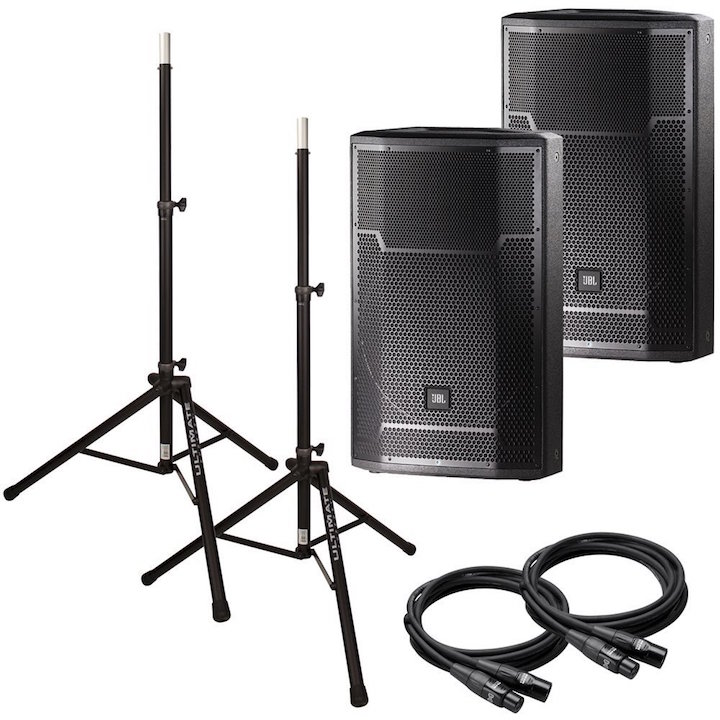
Microphones
From singer songwriters to big orchestras, however small or big your venue is - you need a microphone to get your sound into the PA. Technology has afforded us a myriad of ways to mic vocals and instruments, ironically the availability of so many options have made mic setup a bit more complex than usual, requiring more than just casual knowledge. So to help you in understanding microphones better, we have broken them down into their most popular types below.
-
Dynamic Microphone
The reliability, affordability and quality of Dynamic microphones make them the go-to mics for stages and venues of all sizes. They are also the favorite work-horse mics of may musicians, especially since they can handle the usual punishment that mics get, and do so surprisingly well. They may not be as precise as modern condenser mics, but they can easily withstand high sound pressure making them useful for virtually any type of sound source, from vocals to loud bass drums.
-
Condenser Microphone
Because of the sensitivity of condenser microphones, they are much more widely used in recording. Still, they are quite useful in live performance, and are preferred by musicians and technicians alike when it comes to mic'ing acoustic guitars and for serving as a vocal mic. Note that these mics may require phantom power to operate, a feature that many mixers normally come with.
-
Drum Mics
These are mics especially designed for drum kits. They are usually different types of mics bundled together, with each one assigned to a specific part of the kit which it is optimized for. We have guides to help you in this area - Drum Mic Kits and Overhead Mics.
-
Wireless Mics
Wireless mics offer a more practical and convenient way of getting your vocals amplified. Since they don't require cables, minimal space and maintenance is required and they also allow for more stage movement for your performers. If you're looking for a clutter free stage, especially for vocals, it's best to go for wireless microphone systems like these. Another viable option is to use Lavalier Microphones.

Stage Gear
Stage gear encompasses all the extra equipment that support the performer and the PA system. This includes everything from stands, to outboard gear, to portable stages and many more. Also included are fog and bubble machines, as well as maintenance tools.
-
DI Boxes
A DI box (Direct Input Box) allows you to plug instruments directly into the PA instead of mic'ing an amplifier. Basic Direct Input boxes perform 2 functions; they have a transformer to convert the instrument output to line level, and they also turn an unbalanced signal into a balanced signal - this cuts down on background noise caused by electromagnetic interference hitting the cables. The main instruments that are typically plugged into the PA directly are Bass, Acoustic-Electric Guitar, Keyboards, and less commonly Electric Guitar.
For more information read our guide to The Best DI Boxes.
-
Microphone Stands
Mic stands hold your mic in position to free up your hands to play instruments or do gestures. They also serve as stable placeholders for mics when not in use. There are various types of microphone stands, the most versatile of which are boom stands but they can eat up more space. Straight mic stands with round bases save more space and are ideal for vocalists and backup singers. Other specialized mic stands that are useful in modern setups include those that are designed for desktop use, and mic stands that can be attached to desks and other instrument stands.
-
Music Stands
Music Stands keeping your set list, sheet music and performance notes organized and within reach. You'll want ones that are well balanced, foldable for transport and durable. Also important is the music stand's ability to keep paper or even tablet's in place.
-
Clips for Smartphones and Tablets
Having your iPad or iPhone securely clipped into a stand makes them a very practical tool for musicians and technicians alike. For big productions, they can reduce the clutter of paper and give you more functionality that can come in handy during emergencies, an example is when your audience requests a song that you haven't memorized, or saving an important contact number.
-
Instrument Tuners
Getting your instrument tuned is imperative for every performance, as such musicians should always have a tuner ready. Thankfully, there are now a variety of compact clip-on tuners available at very affordable price points - see our recommendations for the Best Tuners. If all else fails, know that the average smartphone can tune instruments, as long as you can connect your instrument to them, or if the venue is quiet.
-
Portable Stages
If there is no stage, you can make one by setting up a portable stage. These modular design stages will let you turn any venue into a music performance friendly location, and you do so without spending too much time and money. Coffee shop owners along with bar and restaurant owners will find portable stages to be a great solution when they want to add live music performance to their venues, without having to make permanent changes to the venue itself.
-
Drum Riser
Drum risers are portable platforms that can be setup on stage for drummers and their kits. These are used for lifting the drumset to make it more visible in a live band performance setting. The technology behind drum risers have been steadily improving, to the point that you can fit some of them inside a regular car trunk when folded.
-
Fog & Bubble Machines
While not as critical as other gear, Fog & Bubble Machines can spell the difference between boring and entertaining performances. When implemented properly, they add visual excitement that complements the music. Since they do not get as much use, especially for small venue gigs, the most practical course of action is to just rent them when needed. Of course if you are on tour and are using fog machines on a nightly basis, it may be better buy them.
-
Skirting Panels / Cloths
These are panels that cover the sides and front of elevated stages, much like how curtains cover windows. They're important in keeping your stage looking good and keeping the underside safe from tampering or damage.
-
Maintenance Tools and Parts
The law of entropy states that matter is going from order to chaos, and this applies to stage and music equipment. As such, you'll need a toolbox with the right set of tools so you can do troubleshooting and repairs when needed. The number and type of tools will depend on the equipment you're using. Proper and regular maintenance is needed if you want your final sound to always be in tip top shape.

Lighting
In this age of music videos, it's no longer enough to just get the sound right, you also need to get the visuals up to par. Lighting equipment is used to achieve this, ensuring that the performers on stage are highlighted and adding visual flare and drama that matches the songs that are being performed. Lights are generally classified into two groups, washlights for backdrop and Stage Lighting and spotlights which focus on performers. While it is usually the venue owner's responsibility to provide lighting, this is not always the case, and as such even bands and artists should have basic lighting ready in case none is available.
-
Spotlights
We are all familiar with what spotlights do on stage, they highlight important characters and performers and as such are mobile enough to follow performers. From medium to big size venues, spotlights are very important if you want to make sure that you're audience is focused on a particular performer.
-
Par Cans
These are the most common lights used at gigs and are fixed in position - they can't be focused, rather they provide wide wash of light that's normally used to brighten up the stage. These types of lights are widely used in rock and roll arenas, but they are useful regardless of the style of music.
-
Color & Wash Lights
Color & Wash lights add further visual flair to any performance. You can go for versatile multi-colored ones so you get more coloring options, or go for more affordable single color fixed position models.
-
Strobes, Lasers, & Effects Lights
Modern DJs and Bands have been incorporating laser and strobe lights into their gigs for a while now. These offer a more dramatic coloring that resembles lasers.
-
Lighting Controllers & Interfaces
These interfaces let you control or trigger your various lighting equipment as needed. It would be best to have a competent musician handling this so that the lights are properly timed with your performance.
-
Lighting Software
These are applications that let you use your laptop or tablet as lighting controller. They are extremely useful for electronic musicians and DJs, but it can also be great for bands of all types.
-
Cables & Accessories
It's a no brainer that lighting equipment requires multiple cables, as such you will have to keep those in check to ensure hassle free performances. It is also important to keep backups and tools to get these cables maintained or replaced as needed. Most modern light fixtures utilize DMX Network Topology, which allows for detailed control over many lighting parameters in real time.
-
Stands & Trusses
There's no point to having great lighting equipment if you can't have them positioned properly. This is where stands & trusses come in, allowing you to setup the lights where you want them on stage. While do it yourself trusses can do, professionally made ones offer better security and reliability.

Other Live Sound Equipment

-
Road Cases
You have to get your gear to the gig in one piece, and to do that you need to keep your gear safe and organized inside a road case. There are various types of cases available that can cater to various types of rigs, from ready made to custom made ones.
-
Extension Power Cables
Here is another important item that every musician and technician should have inside their bags. It is best to assume that stages are simply not equipped with enough power outlets to handle the various electronic gear that musicians and technicians utilize. They can also be useful for charging batteries and more importantly your phone even during performance.
-
Gaffer Tape
This rubber adhesive based tape is widely used on stages, thanks to its sturdy fabric design and heat resistance. It can also be removed easier than conventional duct tape, and it does so without damaging your equipment or the stage. You'll want to have a roll ready at all times, for organizing cables and securing gear.
-
Hearing Protection
If you're in a band that plays really loud, or you're playing at a big venue that forces you to play louder than usual, then you'll want to invest in hearing protection. Not keeping your ears safe may lead to hearing problems like Tinnitus, which can be debilitating for musicians. While ear plugs sometimes may not look and feel cool, at least you'll have your ears ready for work the next day.
-
Carts and Casters
Carts and casters make it easier to move heavy equipment around. They help reduce heavy lifting which spares your hands and back from excess stress, especially if you're about to play an instrument on stage. You can either get a cart with wheels, or add wheels to your existing gear, be it an amplifier, speaker, rack, or rig cabinet. The result will be easier positioning and quicker setup and pull down.
-
Extra Batteries, Power Adapters and Chargers
The best way to avoid untoward incidents when preparing live sound equipment is by contingency planning. If you've gigged enough, you will know that batteries and power adapters will eventually fail, and you'd be lucky if they fail during setup, because more often than not, problems arise in the middle of a song. With these extras, you can at least have the peace of mind that when they do fail, you have a quick replacement ready.



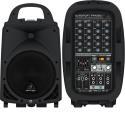
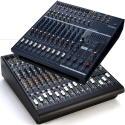
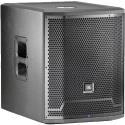
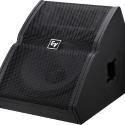
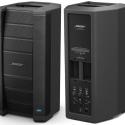
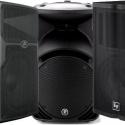
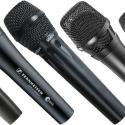
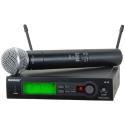
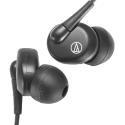
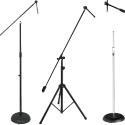
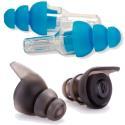





Comments
Hello please we’re hoping to
Submitted by Kenny (not verified) on
Hello please we’re hoping to have a live recording soon and we want to invest in quality sound, we would like to have your company manage this for use and guide in the equipments to get.
Can you help train our
Submitted by Chimahazel (not verified) on
Can you help train our engineers
Have been following your company for more than 2years
We are a musical equipments and accessories suppliers in Nigeria
We supply and set up for mainly churches
Please do reply us back through azutek@yahoo.com
Would be line arrays part of
Submitted by LAURA MORA (not verified) on
Would be line arrays part of PA system?
Yes. In fact some PA systems
Submitted by Jason Horton on
Yes. In fact some PA systems primarily use line arrays like the Bose PAs.
I've heard the term "main"
Submitted by Blaze (not verified) on
I've heard the term "main" before. What does it refer to? Thanks!
I've discussed this with an
Submitted by Jason Horton on
I've discussed this with an audio engineer who works here at Gearank.com, and neither of us understands your question well enough to answer it.
Can you provide some clarification - are you talking about a procedure, a type of gear, or something like mains electricity supply?
Prob no the main Like cut
Submitted by JE (not verified) on
Prob no the main Like cut mains MAIN L&R?
If you were to buy all of the
Submitted by Mason (not verified) on
If you were to buy all of the sound equipment how much would it be in total?
this really helped for my
Submitted by fletcher (not verified) on
this really helped for my school performance thank you sweet heart
Planning a concert soon, need
Submitted by Ronald (not verified) on
Planning a concert soon, need to know how to screen/telecast the show to an outdoor screen approximately 2km away. Is this possible via cable or wireless/satellite?
This is possible through wifi
Submitted by bunny (not verified) on
This is possible through wifi. Depends on your mediator(laptops,Phone,wifi repeater etc.) Throw some Telecast option you can able to do this.. without any cable.
how can access such kind of
Submitted by Anthony Beingana (not verified) on
How can I get such kind of amplifiers to Uganda
We are interested in
Submitted by Pam Ouzts (not verified) on
We are interested in converting our large barn into a music venue to give musicians a space to showcase their talent in our small community. The area to be converted is about 1600 sf and we anticipate anywhere between 80-150 ppl attending these barn concerts. This would not be a business venture - just a private project to bring live music to our community as well as give artists an opportunity to play to an audience. We’ve spec’d out where a stage would go and would like to provide adequate lighting and a basic sound system for everything from a single artist playing a classical guitar (for example) to a 5 piece classic rock band (for example). Many of these musicians would be coming from out of state and so would not be able to bring things like amps and mics on an airplane. We have zero knowledge on what is needed for sound and lighting. How in the world would we begin to pull this together? We’re in Colorado about 1.5 hrs from Colorado Springs and 3 hours from Denver. Our budget for basic sound and lighting is about $20k. Would this amount be enough and are there ppl who don’t charge thousands of dollars that could help us figure out what we need? Thank you, Pam
This is a bit of a difficult
Submitted by Jason Horton on
This is a bit of a difficult thing to advise on without seeing the venue because it may have specific acoustic characteristics that need to be considered.
In addition to your Lights and PA System, you'll also need backline equipment which includes a bass amp, 2 or 3 guitar amps, and possibly a keyboard amp and a drum kit.
Because you have a local community of musicians, you'll probably have some people experienced with setting up PA systems or staging events that you can ask for help in determining what gear you need and which things to buy new or second hand.
My best guess is that your budget should be adequate for the space. You'll also want to check if there are any local ordinances you need to comply with even if you're not doing it as a business - for example sound and fire regulations may apply and complying with them can get costly.
Your 2nd paragraph alone was
Submitted by Pam Ouzts (not verified) on
Your 2nd paragraph alone was very helpful. We’re on 40 acres surrounded by BLM land, so thankfully don’t have to worry about ordinances. I contacted a college in Colorado and asked about music business majors and sound engineers - they were able to help me find musicians and sound techs with experience in setting up venues for music festivals and such. I think this will be a good starting point. Thanks so much for your response.
Is it possible to have custom
Submitted by Musicscreen (not verified) on
Is it possible to have custom cases?
Thank you
Yes. Just do a search for
Submitted by Jason Horton on
Yes. Just do a search for "custom flight cases" to find someone near you that makes them.
would you be able to send me
Submitted by Eunice Hosea (not verified) on
Would you be able to send me a catalogue please?
We don't sell anything
Submitted by Jason Horton on
We don't sell anything ourselves, all the music equipment we recommend is available on this website in our Gear Guides section where you will find links to retailers and manufacturers for you to buy from.
How many operators are
Submitted by Ali (not verified) on
How many operators are required to run a live performance or concert?
Without specific information
Submitted by Jason Horton on
Without specific information about the nature of the production such as the venue size, audience size and the nature of act, there's no way of providing a meaningful answer.
Many gigs for regular rock/pop/blues bands usually only require a single sound engineer and sometimes someone to operate the lights.
If you want to describe the kind of show you are interested in staging, then someone will be able to give you a more specific answer.